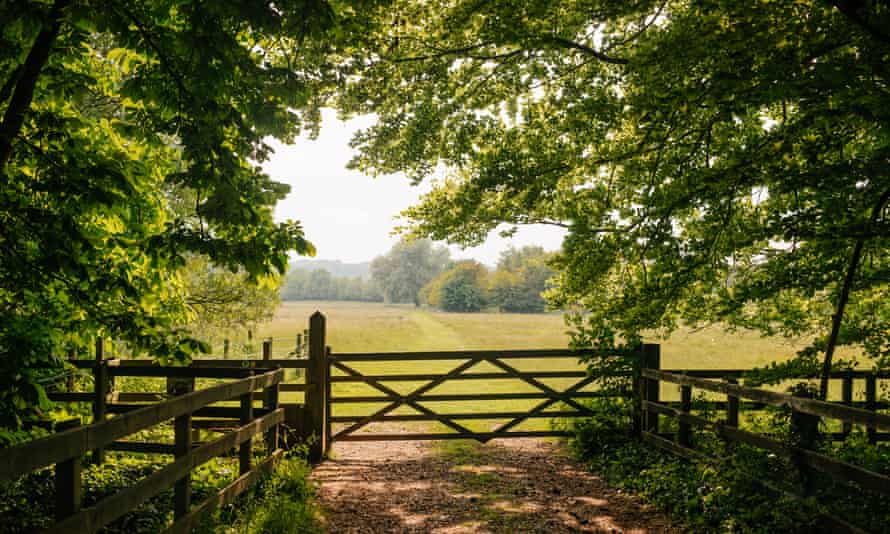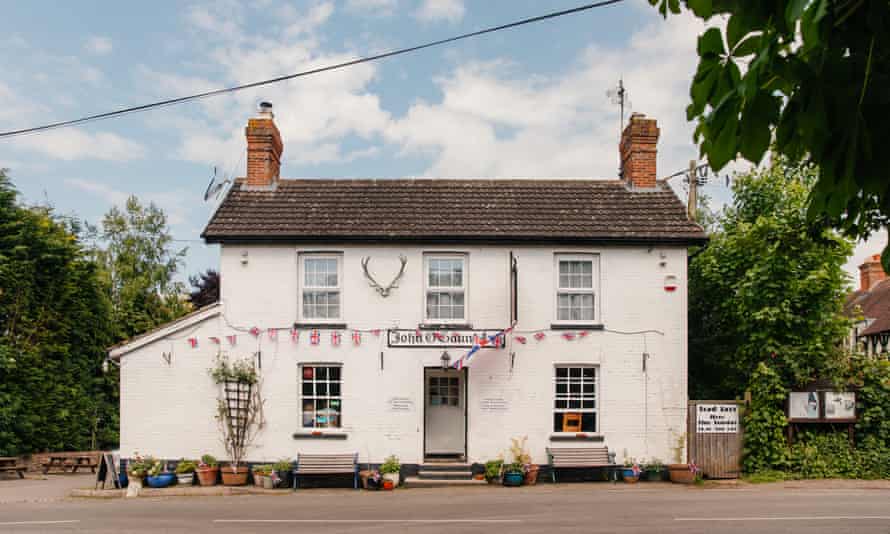Rivers are marked in blue on maps, but close up, they often disappoint, their water an opaque mud-brown. But chalk streams look like rivers in a child’s picture book, sparkling and shallow, with gravel beds and lush water weed bathed in sunlight shining through limpid water.
They owe their resemblance to a stiff G&T to permeable chalk bedrock that lets rainwater drain away without washing mud or silt into the waterways. The world has about 210 chalk streams, and 76% of them are in England, where they are compared to the rainforests or Great Barrier Reef, so rare is the habitat they offer. And like those ecological treasures, chalk streams are in crisis too – threatened mainly by water companies abstracting from them too greedily.

For many, the River Test is the pre-eminent chalk stream: one of the longest, it’s famous as the birthplace of modern dry fly fishing. But you don’t need to care about rods and lines to enjoy the Test Way, a 47-mile route from the river’s source in north Hampshire to Southampton Water. It is divided into eight stages, but for a day hike, we choose a circular walk taking in ancient woods, water meadows, sheep-grazed valleys and soul-soothing views from chalk hillsides.
Refreshment will be at a free house metres from the river: the John O’Gaunt Inn in Horsebridge, known for good food and Sunday jazz. But as it doesn’t offer rooms, we’re staying somewhere much older. Michelmersh Manor Farm, a few miles south, was first recorded in 1205 as a “large grange with fortified gatehouse and great hall”.
Its listed medieval barns are now smart holiday lets, and we’re the first guests in two-bedroom Archers Retreat – so named because in 1415, Henry V’s renowned bowmen gathered in the adjacent field before marching to the Battle of Agincourt. Maybe it had something heroic about it because, in 1944, Canadian and American soldiers camped in that field as they prepared for D-day.

We’re planning some marching, though not fighting, and the farm is a perfect base. A stile gives access to another historic battle trail: the 625-mile Monarch’s Way, based on the circuitous route King Charles II took in 1651 as he fled the battle of Worcester. We follow this for a half-mile to 800-year-old St Mary’s church, with its weatherboarded clocktower. There’s homemade marmalade on sale inside, for those who don’t mind adding weight to their rucksack.
Right out of the church gate and then left at a fingerpost is a narrow path under arching hawthorns, brambles and ivy. In April there’s blossom on the trees and peeping primroses underfoot. The handy Birdnet app tells us the unfamiliar birdsong is of treecreepers and dunnocks in the hedgerows.
Soon we’re climbing through open fields linked by kissing gates, heading north-west to the riverside hamlet of Brook. After about a mile there’s a metal gate – the highest point of the walk, 91 metres above sea level – with expansive river views from the top of a steep, stepped path down to the valley.
At the bottom, we cross the A3057 to a footbridge over the river and realise two things. The first is that the Test is not one river but a mass of tributaries, side streams, mill channels and carriers. At some points two, three or even four streams run parallel.

The other is that though the Test Way runs along the Test Valley, it rarely follows the river. Shouty “Private: No Entry” signs keep walkers away from grassy stretches of riverfront. Presumably the fishing rights (Eric Morecambe was a regular) are too lucrative for any Tom, Dick or hiker to be allowed in. We’re initially disappointed but soon realise that the waymarked route, through villages, up hills and into copses, makes a more varied walk. It crisscrosses the channels, offering river views aplenty.
The trail is clearly marked with blue TW signs, and we follow them north initially, along the former Sprat and Winkle line to Horsebridge. The railway closed in 1964, so we’re surprised to see Horsebridge station in smart green and yellow paint, with signal box and rolling stock. Turns out it’s now a wedding venue. Civil ceremonies on platform two.
The pub, square and white with a slate roof, pops into view at the end of a track. We’ve walked four miles, so have earned roast lunches and beer.
The sun is high as we head back to Brook then turn right over the bridge to take the Test Way over water meadows towards Mottisfont Abbey. The trail skirts the back of this stately home, which is about as old as Michelmersh Manor Farm, but today has neoclassical interiors, a rose garden, and the usual NT cafe and gift shop. We’re glad to be on our wilder route, eventually following a narrow lane to the ancient mossy brick and stone of Mottisfont village.

The abbey church was incorporated into its wealthy owner’s house after the Reformation, but the village’s 12th-century St Andrew’s still stands in a peaceful corner, and we turn right past it to head south across watermeadows again. There’s a footbridge over the Dun, which runs into the Test a short way east – then it’s uphill through woods to a bridge over a working railway.
The Test Way continues south, but we leave it here, turning left towards Kimbridge, from where it’s a couple of miles on lanes to Michelmersh. For the car-free, Mottisfont & Dunbridge station (trains to Southampton or Salisbury) is a mile the other way.
The road through Kimbridge runs over four strands of the Test, and at each we gaze into the glassy water. Though it looks placid, its future is in peril, and campaigners face a hard battle against pollution, sewage and climate change. Hopefully it won’t be as bloody as Agincourt.
Google map of the route
Allow Google content?
This article includes content provided by Google. We ask for your permission before anything is loaded, as they may be using cookies and other technologies. To view this content, click ‘Allow and continue’.
Start/finish Michelmersh Manor Farm
Length 9 miles
Duration 4 hours (6 with lunch stop)
Difficulty Easy
The pub

The John O’Gaunt Inn was called the Railway Inn until the Beeching cuts, when it was renamed after the third son of Edward III, who owned much of Hampshire in the 14th century. It’s a proper, dog-friendly country pub run by a proper, ruddy country chap, Chris Adams. There are open fires in the L-shaped bar, real ales on tap and meat on the menu: beef, lamb, pork, venison and game sourced and reared within five miles. There is a veggie roast, but this place is about good flesh, well-cooked – in summer that might include trout from the Test, fresh or home-smoked. Chef Lee McDowell’s rare roast venison is tender and glorious, with four vegetables, yorkshire puds and impeccable roasties.
Two bespoke bitters, John O’Gaunt and stronger Horsebridge Special, are brewed locally, and guest beers might come from the Dead Brewers Society, which revives old ale recipes.
johnofgaunt.co.uk

Where to stay
Fran and John Drake have run Michelmersh Manor Farm for 40 years and offer five holiday cottages and two shepherd’s huts. The two-bedroom Archers Retreat is in the restored medieval barn, with ancient timbers throughout. It has a smart bathroom and kitchen, underfloor heating and woodburner, but there’s never any doubt you’re on a farm. One side faces the cowshed, there are open fields in front, and chickens, pheasants and peacocks might peer in through the floor-to-ceiling windows.
Cottage for four from £200 a night, michelmershmanorfarm.com
 Top Naija News: Nigerian News, Breaking News Nigeria and World News Top Naija News is a daily news publication in Nigeria, delivering the latest breaking news in Nigeria and around the world.
Top Naija News: Nigerian News, Breaking News Nigeria and World News Top Naija News is a daily news publication in Nigeria, delivering the latest breaking news in Nigeria and around the world.



